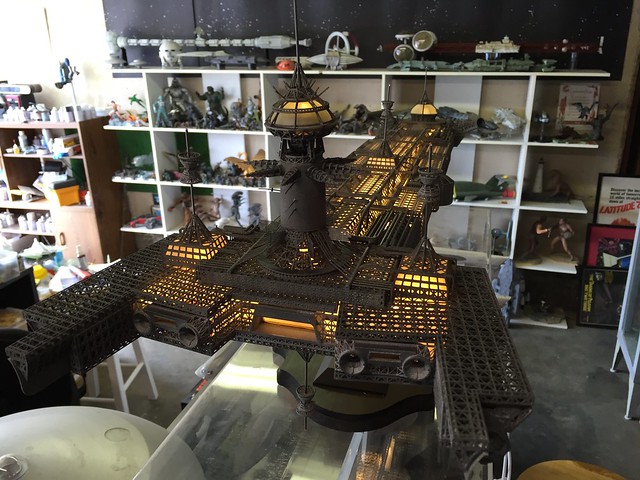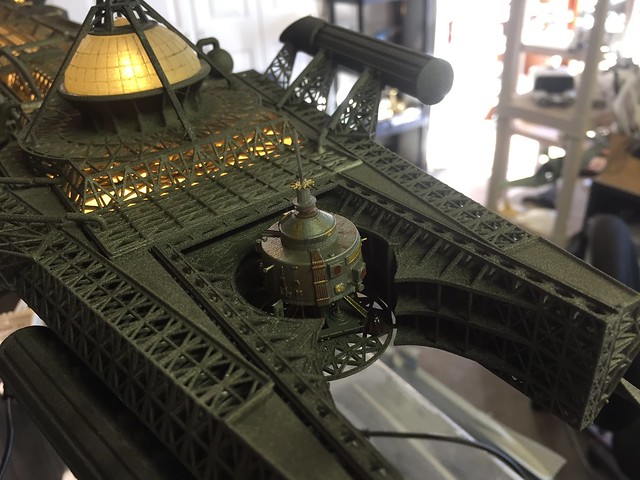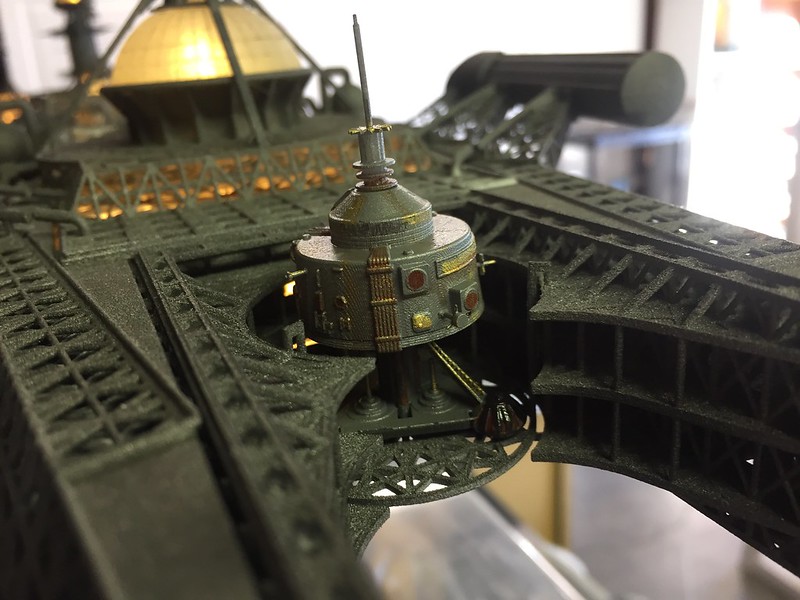The Disney movie “The Black Hole” was a little “off.” Still, for a lot of us 70’s/80’s kids, it’s something a little special. Heck, it is – to the best of my knowledge – one of the few movies (never mind the “Disney kids movie” subset) that has the villain die at the end… and then get sent to Hell. Even if that was only a delusion by one of the other characters, it was a hell of a thing to see on the screen back then.
Like most sci-fi movies, the “sci” was pretty awful. The ship designs were basically nonsensical from a basic engineering standpoint. Still, the starship Cygnus was an undeniable thing of beauty. Made from a whole lot of photoetched brass, it was a massive “cathedral” of a spaceship model. It’s a crying shame that Disney has not yet seen fit to release “The Black Hole” on Blu-Ray, if for no other reason than to see the Cygnus in hi-def.
As a modelgeek, I’ve always wanted a good model of the Cygnus. MPC released a 1/4225 kit in 1979; it was certainly a product of it’s time. Like the MPC Star Destroyer, it’s a good *approximation* of the Cygnus, but given the filigree nature of the Cygnus’ construction, a conventional injection molded plastic kit for kids could hardly be expected to be very accurate. Even so, copies of this kit are going for prohibitively high prices (here’s one on eBay for a mere $350).
Technology has advanced to the point where a really impressive model of the Cygnus can be 3D printed… and is available for purchase. Available through Shapeways, you can buy all the bits and pieces needed for a ginourmous 1/700 Cygnus… for about $1200.
Here’s a Flickr account of someone who bought the parts and built up the kit. He went the extra mile and added a laser-cut plexiglass inner structure for strength and lighting purposes.
It is… really impressive.
Droooool:


The results do show the current limitations of 3D printing when seen close up. The surface finish is unfortunate. But 3D printing has produced parts that would be essentially impossible with injection molding… and the technology will only get better and cheaper in time. Give it a few years, and Shapeways will probably have parts with far better surface finishes and for (slightly) less cost.









